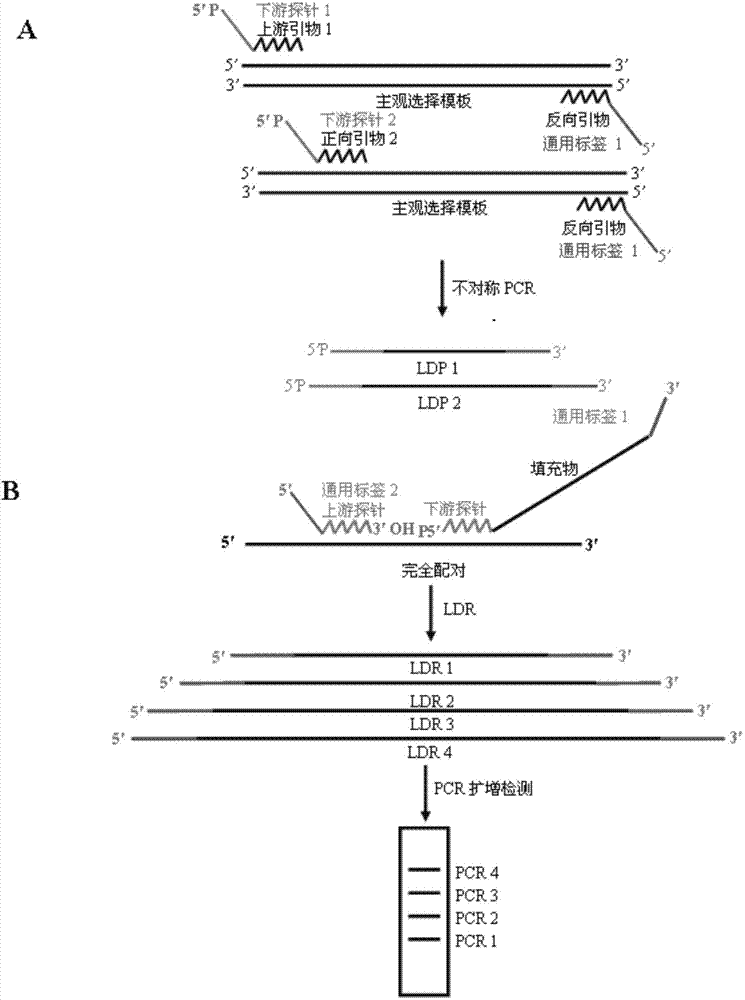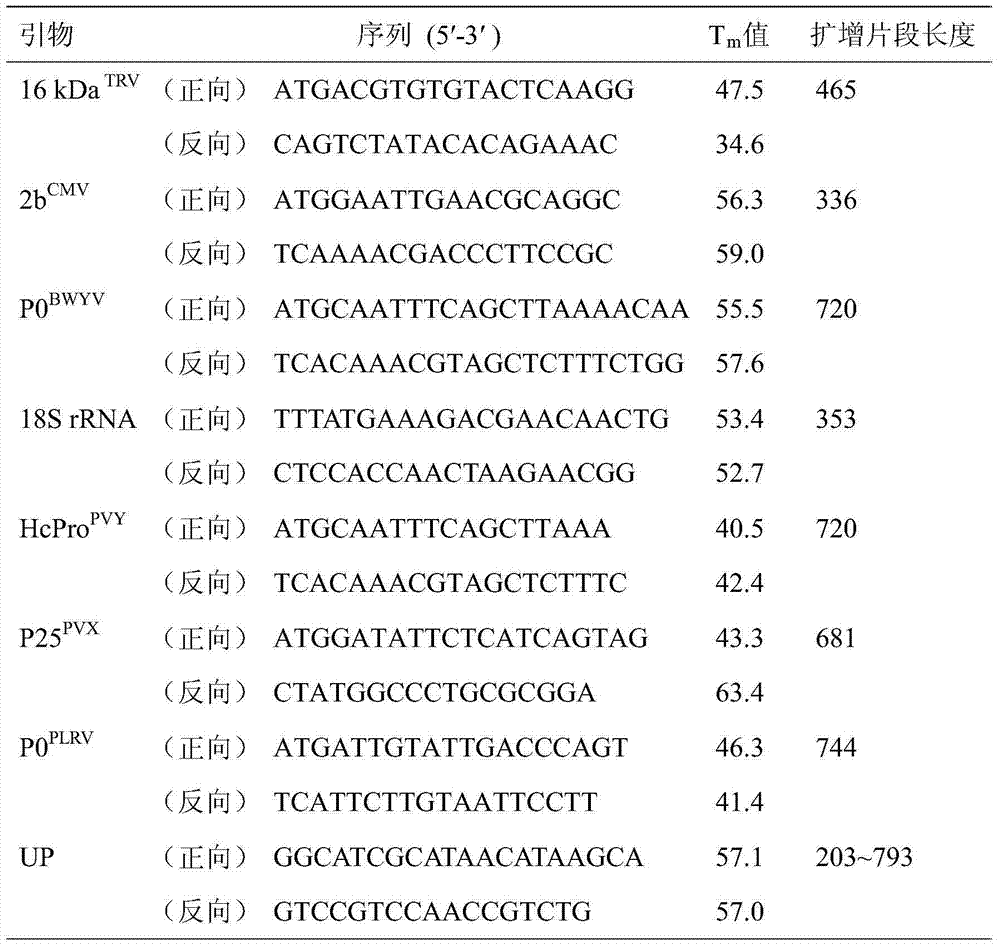A method for simultaneous detection of multiple trace targets based on long probes
A technology of long probes and targets, applied in the direction of microorganism-based methods, biochemical equipment and methods, microorganisms, etc., can solve the problems of chip hybridization false positives, increase detection costs, etc., achieve rapid detection, low cost, and save experimental synthesis cost effect
- Summary
- Abstract
- Description
- Claims
- Application Information
AI Technical Summary
Problems solved by technology
Method used
Image
Examples
Embodiment 1
[0041] Example 1: A method based on a novel long probe to simultaneously detect multiple trace targets, respectively detect 50 leaf samples of potato virus suspected to be infected, and determine the types of silencing inhibitors in the infected samples. There are 6 commonly known species, respectively tobacco rattle virus 16kDa gene (16kDa TRV ), cucumber mosaic virus 2b gene (2b CMV ), Beet Western Yellowing Virus P0 gene (P0 BWYV ), Potato virus Y HcPro gene (HcPro PVY ), Potato virus X P25 gene (P25 PVX ), Potato leafroll virus P0 gene (P0 PLRV ); The inventive method specifically carries out following steps successively:
[0042] 1) Download the nucleic acid sequences of the 6 inhibitors to be detected and internal reference 18S rRNA from the NCBI website, clone the corresponding full-length sequences, see Table 1 for the full-length primers, and use DNAstar software to analyze each strain of each inhibitor and internal reference The nucleic acid sequences were compa...
PUM
 Login to View More
Login to View More Abstract
Description
Claims
Application Information
 Login to View More
Login to View More - R&D
- Intellectual Property
- Life Sciences
- Materials
- Tech Scout
- Unparalleled Data Quality
- Higher Quality Content
- 60% Fewer Hallucinations
Browse by: Latest US Patents, China's latest patents, Technical Efficacy Thesaurus, Application Domain, Technology Topic, Popular Technical Reports.
© 2025 PatSnap. All rights reserved.Legal|Privacy policy|Modern Slavery Act Transparency Statement|Sitemap|About US| Contact US: help@patsnap.com



